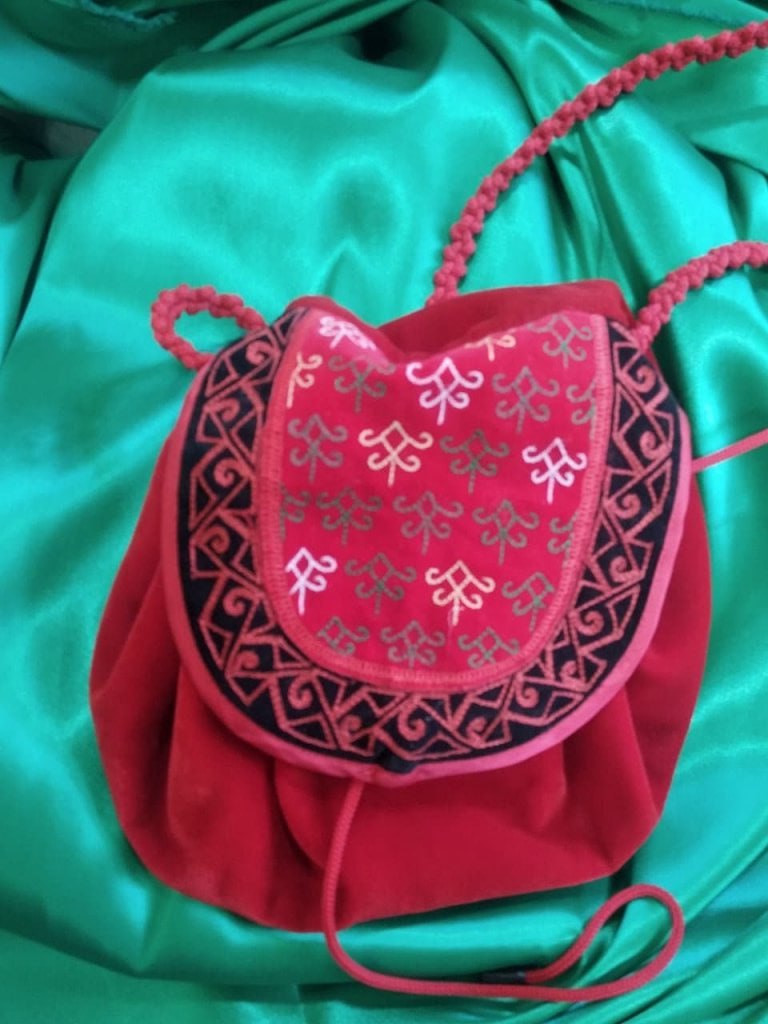
The figurative language of Karakalpak decorative and applied art is expressed in ornamental forms. Ornaments, in addition to their artistic and aesthetic significance, serve a crucial communicative function. Preserving their ancient roots, they provide a unique source for studying the centuries-old traditions of the people, their ethnogenesis and ethnic history, as well as their worldview and interactions with neighboring cultures.
Traditional Karakalpak art is characterized by diversity and authenticity. It is represented by highly artistic items that shape the daily life of the community, including various types of textiles such as clothing decorated with exquisite embroidery, weaving, and plaiting, as well as products made from leather and wool. These creations reflect not only functionality but also the richness of the Karakalpak cultural heritage. In the past, handmade yurta textiles were part of the bride's dowry. Under the guidance of her mother, an ordinary Karakalpak girl spent approximately 6 to 8 years producing the yurta’s adornments. The textile decoration palette replicated the colours of Karakalpakstan’s nature. It used calm but at the same time saturated range of ochre, red and brown colours interspersed with halftones of crimson, yellow, blue and green. Black and white had a special place. They were used for the ornament’s basic background as well as pattern lines.
A mosaic patchwork technique (kurak) with the core idea of wastelessness has always been popular in Karakalpak culture. It was used for decorating tablecloths, duffel bags, wedding canopies, blankets, pillows, hinged door framing made of mat, baby clothes and others. The patterns were compiled from saut (chain armour), kalkan (shield) and tolkin (wave) motives. Kurak patterns were known as amulets and expressed the desire of rich posterity.
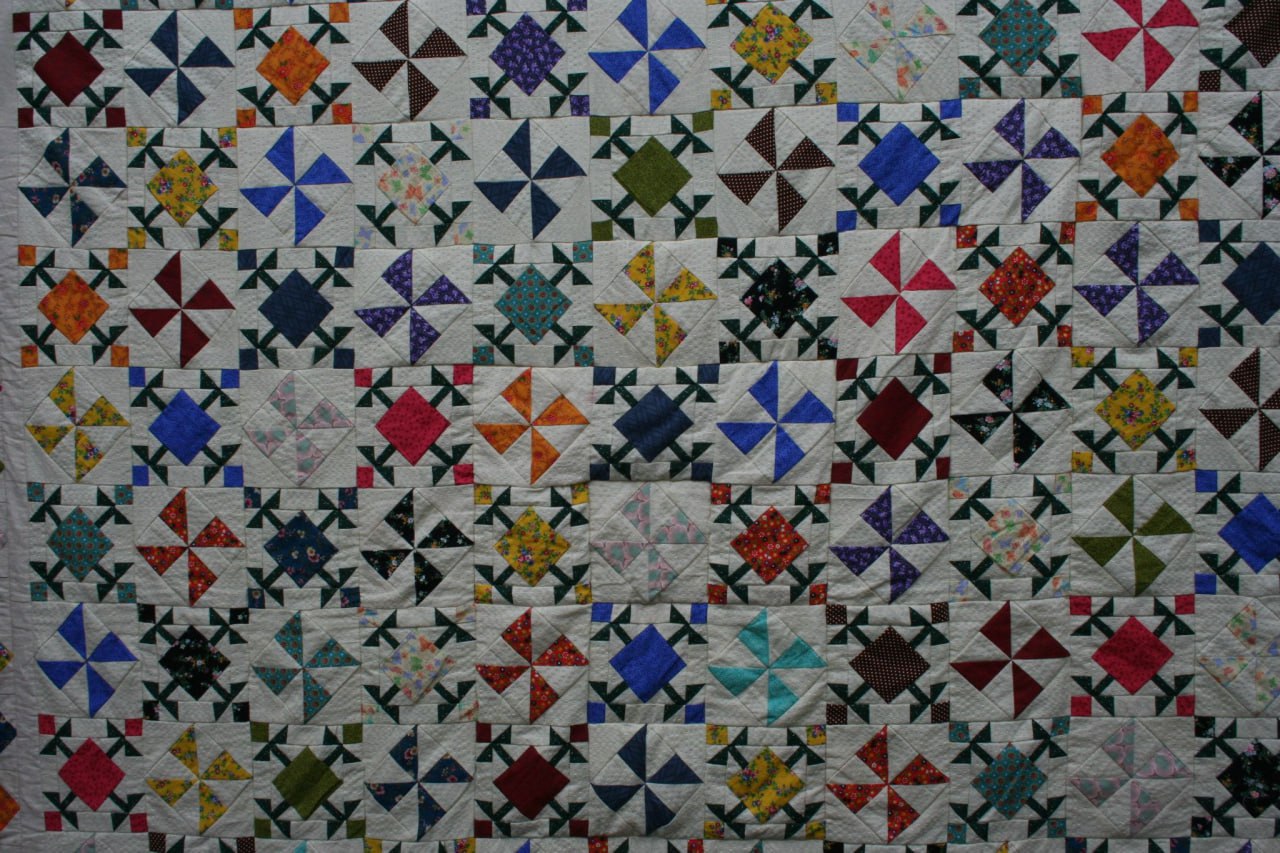 Decorative felting products included various types of floor mats, ornamental felt mats for the yurta’s entrance decoration and a saddle blanket. Felt mat was decorated with various patterns. A “travelling wave” motif with alternating colouring (the symbol of heavenly moisture) stood out against its background. This pattern is unique since its background is also read as a pattern.
Decorative felting products included various types of floor mats, ornamental felt mats for the yurta’s entrance decoration and a saddle blanket. Felt mat was decorated with various patterns. A “travelling wave” motif with alternating colouring (the symbol of heavenly moisture) stood out against its background. This pattern is unique since its background is also read as a pattern.
 A set of pile carpets included door lambrequin (esik-kas), a front side of a garment cover (karshin), a tableware bag (kerge), carpet (gilem), saddlebags (korzhin) and saddle blanket (degde). Originally an esik-kas mat adorned the inner side of the yurta’s entrance and was considered the main talisman of family happiness like an amulet-carpet karshin (a front side of garment cover for clothes and wool storage) and kerge mat (a front side of a hanging bag that was used for storing wooden utensils).
A set of pile carpets included door lambrequin (esik-kas), a front side of a garment cover (karshin), a tableware bag (kerge), carpet (gilem), saddlebags (korzhin) and saddle blanket (degde). Originally an esik-kas mat adorned the inner side of the yurta’s entrance and was considered the main talisman of family happiness like an amulet-carpet karshin (a front side of garment cover for clothes and wool storage) and kerge mat (a front side of a hanging bag that was used for storing wooden utensils).
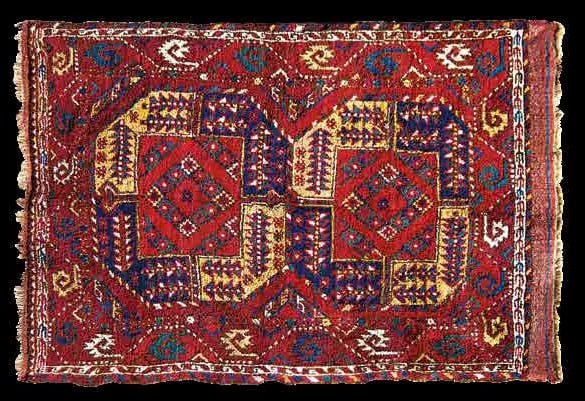 A great number of patterned yurta decorations were napless ribbons and runners (beldeu, kizil-kur, ak-kur). They were made of cotton, wool and silk threads.
A great number of patterned yurta decorations were napless ribbons and runners (beldeu, kizil-kur, ak-kur). They were made of cotton, wool and silk threads.
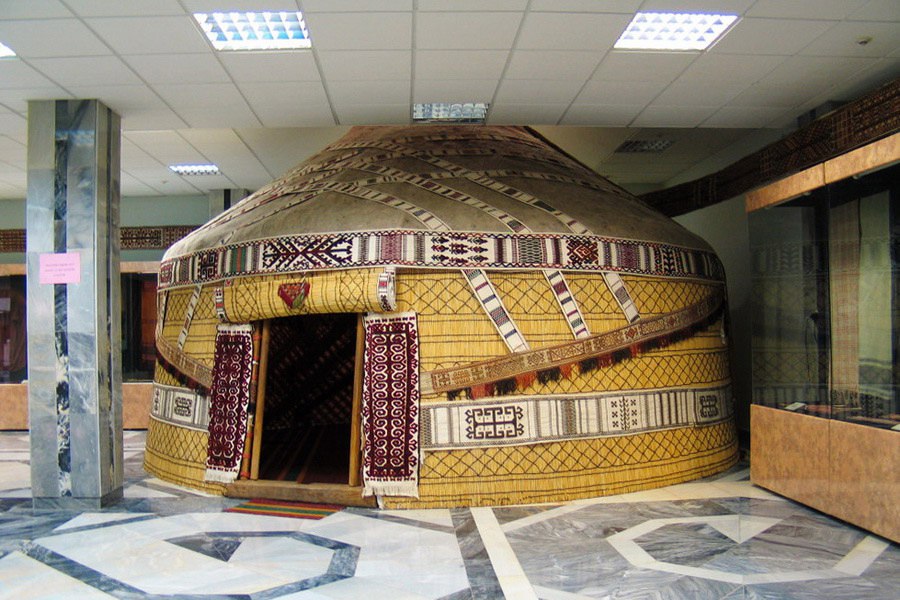 Other unique Karakalpakstan handicraft articles with relief patterns were woven using a combined technique. Their smooth background was made of cotton, while the pile patterns were produced of wool: akbaskur and jan-bau runners, and shiy-ongir and suu-agar mats.
Other unique Karakalpakstan handicraft articles with relief patterns were woven using a combined technique. Their smooth background was made of cotton, while the pile patterns were produced of wool: akbaskur and jan-bau runners, and shiy-ongir and suu-agar mats.
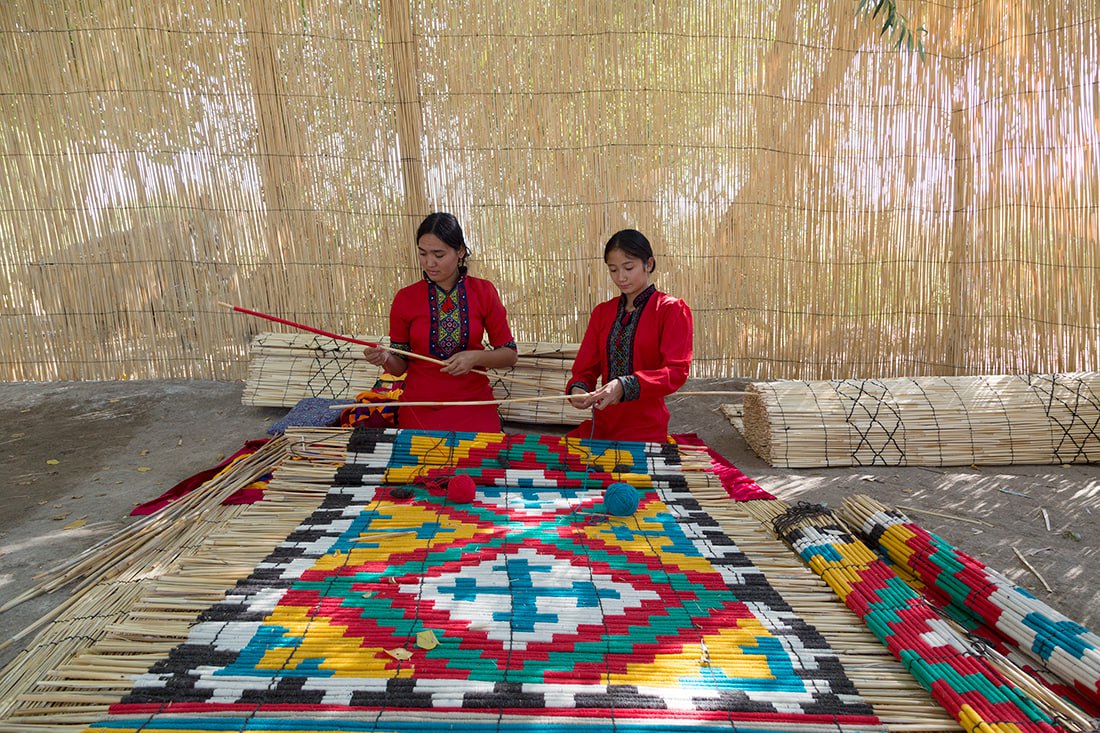 The most labour-intensive rugs had a very characteristic composition – ak-baskur, janbau, bel-deu. Their independent groups of ornaments separated by a narrow cross pattern were alternated among the whole length (for example, gas-moyin – a gooseneck). These groups did not repeat themselves or were placed symmetrically towards the middle of the rug. After covering the yurta’s framework, paired episodes were placed against each other in the interior or symmetrically in the exterior.
The most labour-intensive rugs had a very characteristic composition – ak-baskur, janbau, bel-deu. Their independent groups of ornaments separated by a narrow cross pattern were alternated among the whole length (for example, gas-moyin – a gooseneck). These groups did not repeat themselves or were placed symmetrically towards the middle of the rug. After covering the yurta’s framework, paired episodes were placed against each other in the interior or symmetrically in the exterior.
Wide alasha carpets were made by sewing narrow patterned runners together, which had been woven on an ormek loom. They were hung on a yurta’s wall and spread over the felt flooring. Karakalpak alasha resembled rugs of nomadic Uzbek tribes.
 The old female masters of Karakalpakstan had more than 60 types of amulet patterns. The most popular of them included various combinations of horn motifs – a symbol of fertility and prosperity: pair of horns (kos-muyiz), eight horns (segiz-muyiz), twelve horns (on eki-muyiz).
The old female masters of Karakalpakstan had more than 60 types of amulet patterns. The most popular of them included various combinations of horn motifs – a symbol of fertility and prosperity: pair of horns (kos-muyiz), eight horns (segiz-muyiz), twelve horns (on eki-muyiz).
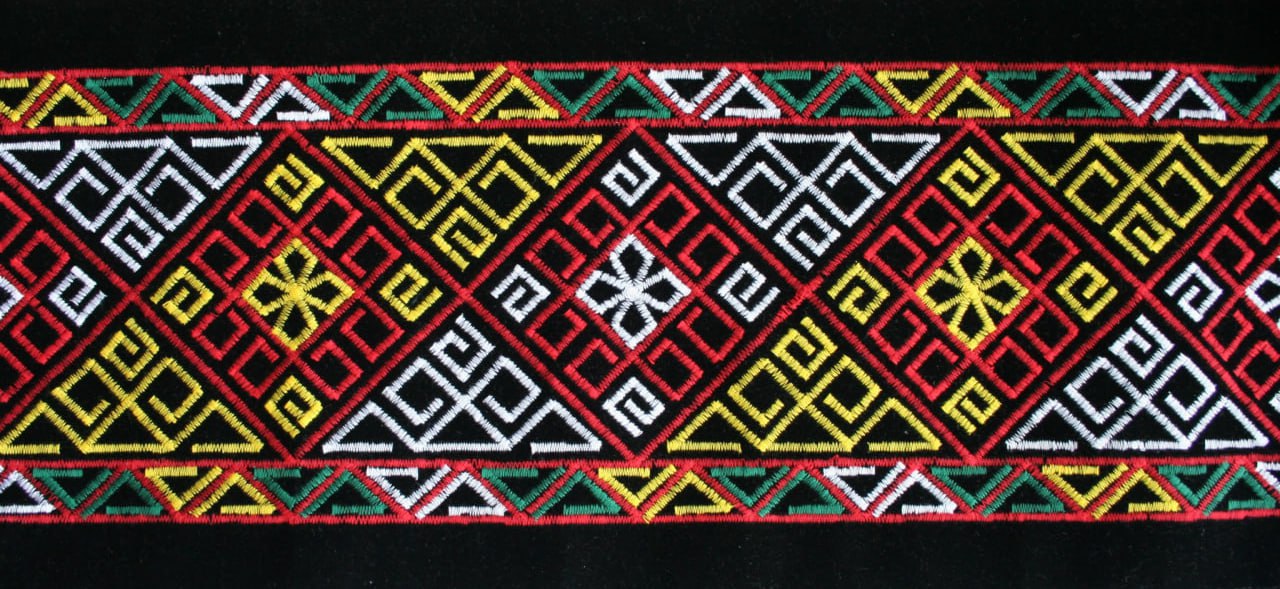
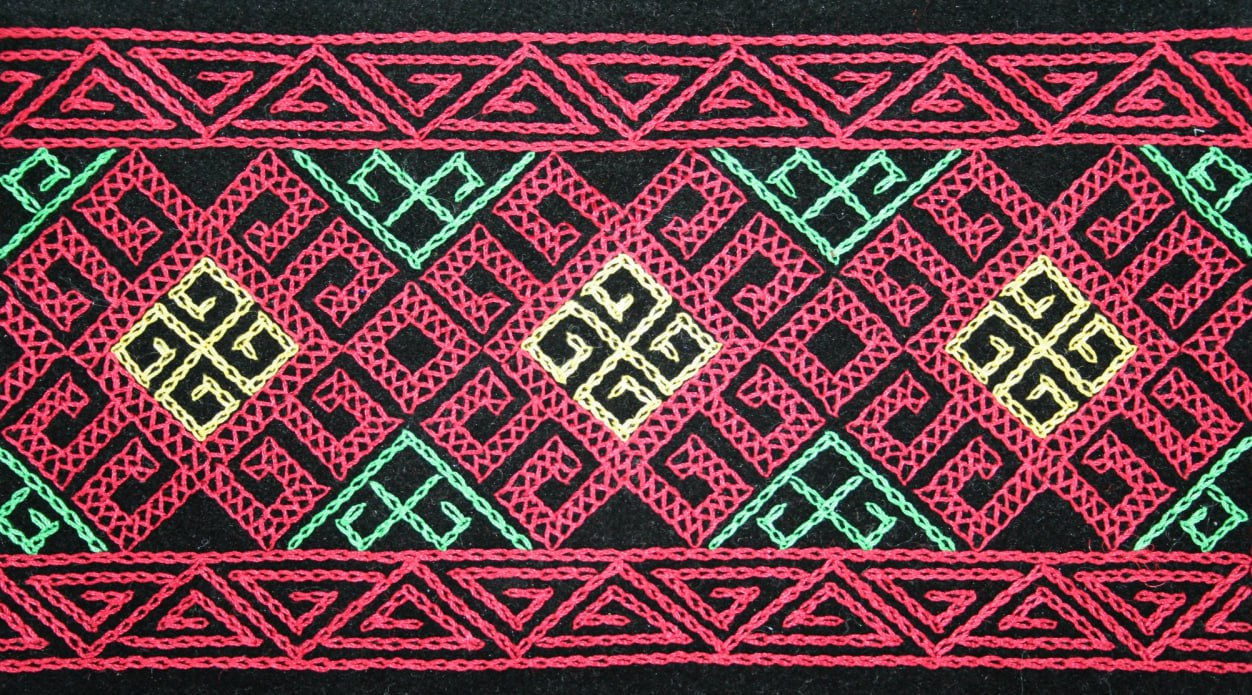 The names of other patterns were associated with flora, fauna and household items: foal's hoof (tay-tuyak), fish eye (balik-koz), crow's claw (garga-tirnak), bird wings (kus-kanat), flower (gul), hook (irgak), comb (tarak), earring (sirga) and many others.
The names of other patterns were associated with flora, fauna and household items: foal's hoof (tay-tuyak), fish eye (balik-koz), crow's claw (garga-tirnak), bird wings (kus-kanat), flower (gul), hook (irgak), comb (tarak), earring (sirga) and many others.

 One of the important qualities of the applied art of the Karakalpaks lies in its ability to integrate unique handcrafted pieces into modern interiors almost seamlessly. These creations harmoniously complement contemporary decorative settings. The old masters seemingly anticipated the demands of today’s aesthetics, addressing challenges that resonate with modern sensibilities and interests. Their artistry not only preserves tradition but also engages with contemporary themes, making their works relevant and appreciated in the present day. This timeless quality allows the intricate beauty of Karakalpak art to continue to inspire and enhance contemporary living spaces.
One of the important qualities of the applied art of the Karakalpaks lies in its ability to integrate unique handcrafted pieces into modern interiors almost seamlessly. These creations harmoniously complement contemporary decorative settings. The old masters seemingly anticipated the demands of today’s aesthetics, addressing challenges that resonate with modern sensibilities and interests. Their artistry not only preserves tradition but also engages with contemporary themes, making their works relevant and appreciated in the present day. This timeless quality allows the intricate beauty of Karakalpak art to continue to inspire and enhance contemporary living spaces.
